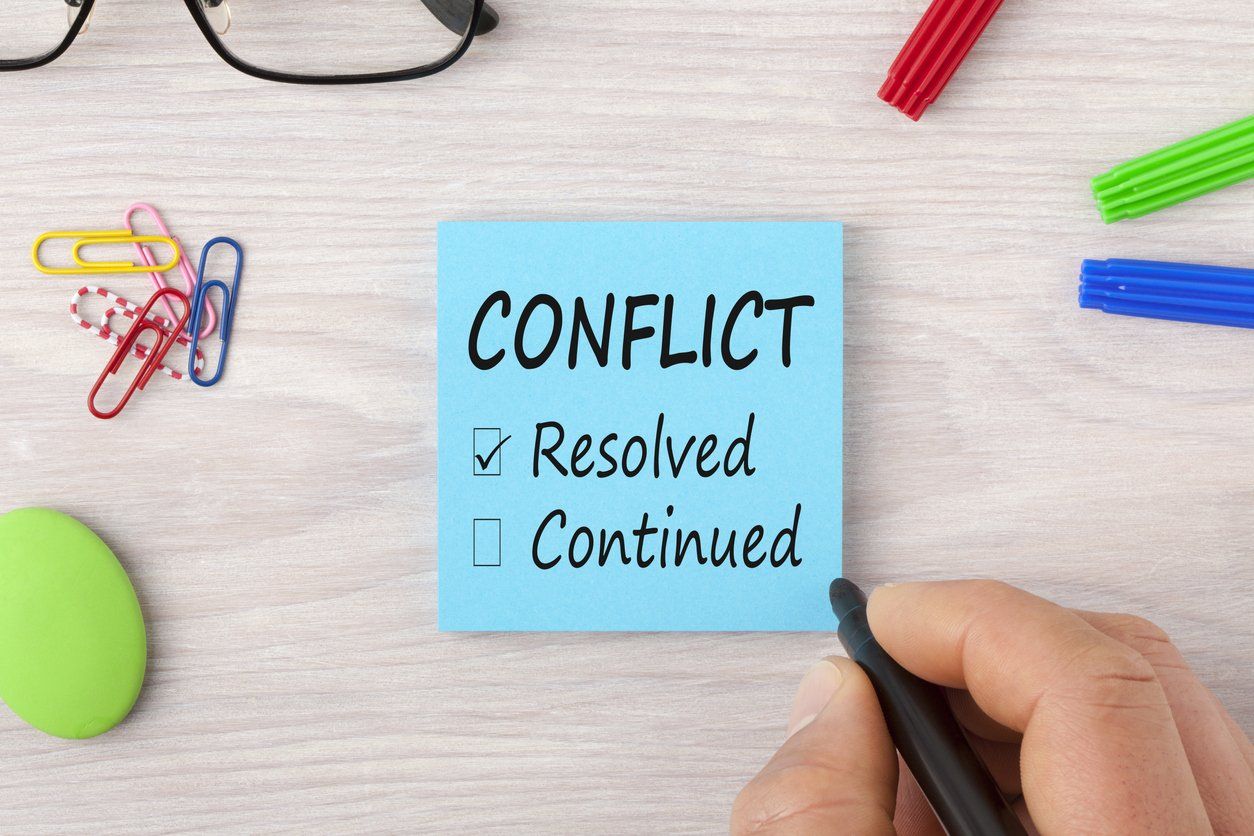7 Steps for Resolving Conflict Effectively

We all know that every individual is unique. People have diverse goals, backgrounds, education, personalities, experiences, and personal preferences. So, it shouldn’t surprise us that we often disagree on what to do or how to do it. When disagreements arise, it is important to resolve them respectfully without succumbing to heated relationship-damaging conflict. Differences of opinion and perspective arise frequently. When they become emotionally charged, we aren’t likely to think clearly or agree on productive solutions. Consider these 7 steps for resolving conflict respectfully.
1. Find a safe and private place to talk.
Gather in a place where only those involved in the conflict are within earshot and view of the discussion. Avoid other people gossiping or making assumptions that will complicate conflict resolution and interpersonal relationships.
2. Clarify what the conflict is.
What is the disagreement about? Be clear on what you are trying to accomplish together. Write down the common goal where everyone can see it to remind yourselves of the desired end result of your work.
3. Let everyone have their say and listen actively.
Uncover the needs or factors each person feels aren’t being met by the current direction or other people’s suggestions. Ask open-ended questions of each other to learn all the perspectives. Restate what you thought you heard to determine if you really understand their thoughts and feelings or need further explanations. Go around the room, giving each person a chance to be heard and understood without allowing any discussion on the merits of their ideas or concerns.
4. Determine possible ways to meet the common goal.
Now that you have clarity about the common goal and have truly heard everyone’s individual perspectives, list all the options anyone can think of to accomplish the goal. Withhold discussion about the merits of any option until all options suggested are captured on a whiteboard, flipchart, or screen.
5. Select the best solution.
Identify the common elements in the options. List the pros and cons of each option on flipcharts so everyone can see them. Discuss which pros will be most impactful in achieving the goal and which cons will be most detrimental. Determine which options everyone believes are strong enough to consider further. Explore the merits and weaknesses of these in more depth. Ask questions of each other to increase everyone’s understanding of options still on the table. Then, have every person rank the options. Drop the options which nobody or few people rank first or second. Check if anyone wishes further discussion and then ask each person which of the remaining options are their first and second choice. Discuss the impact of the differences in the options which receive lots of votes and then come to consensus or vote on which one to implement.
6. Be clear on how the chosen solution will be implemented.
What steps will be taken by whom to move forward. Write down the steps, the responsible persons, and the deadline dates. Circulate this document to all involved.
7. Evaluate progress and hold each other accountable to achieving the goal.
Determine when everyone involved will meet to share their progress and address the obstacles that are encountered. Ask for help when you run into a bottleneck. Continue to schedule progress review meetings until the goal is achieved. Once the goal is achieved, or along the way, discuss and write down lessons learned and strategies for reducing future conflicts.
Sometimes different perspectives can be understood, options considered, and the implementation plan drafted in an hour or less. In more difficult situations, it could take multiple meetings over several days. However, as long as everyone agrees on the goal to be achieved and the goal has a meaningful impact on the organization’s results, the time is well spent. The goal will be accomplished, people will feel respected, and the foundation will be laid for ongoing group trust, engagement, and results!

